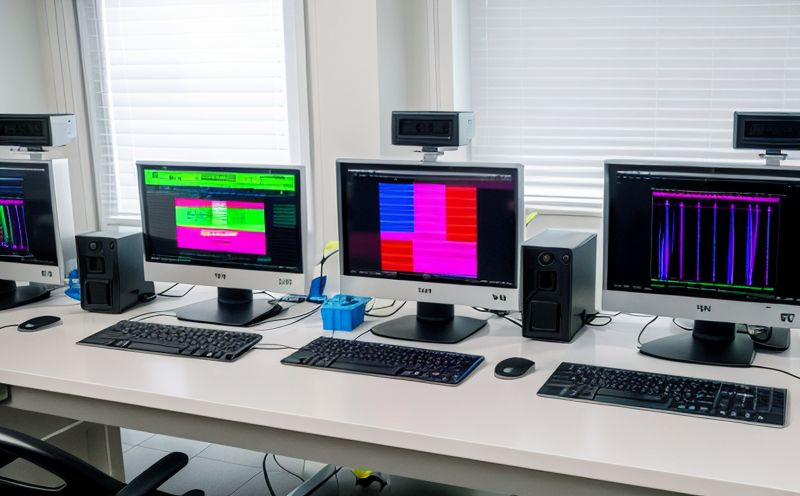FDA Viral Contamination Testing of Cell-Based Products
The FDA mandates strict quality control measures to ensure that cell-based products are free from viral contaminants. This service focuses on the comprehensive testing and validation procedures necessary to meet these regulatory requirements. The process involves meticulous sample preparation, advanced analytical techniques, and stringent quality assurance protocols.
Cell-based products, including vaccines, gene therapies, biologics, and regenerative medicines, must be rigorously tested for potential viral contamination. This is crucial not only to prevent adverse effects on patients but also to comply with the stringent guidelines set forth by the FDA. The testing process begins with the collection of samples from various stages of production, including raw materials, intermediate products, and final formulations.
The first step in this procedure involves the isolation of viral nucleic acids or proteins using appropriate extraction methods. Once isolated, these components are subjected to a series of tests designed to detect the presence of viruses that could potentially contaminate the product. These tests include plaque assays, neutralization assays, and quantitative PCR (qPCR) for specific virus identification.
The selected instrumentation plays a crucial role in ensuring accurate results. High-throughput qPCR machines are used for rapid screening, while real-time PCR systems provide precise quantification of viral loads. Electron microscopy offers an additional layer of validation by visualizing potential contaminants at the molecular level. All these tools work together to provide comprehensive data on the presence or absence of viral contaminants.
The FDA's guidance document, FDA Guidance for Industry: Viral Safety Evaluation of Biotechnology Products Derived from Cell Lines of Human or Animal Origin, provides detailed instructions on the testing protocols. Compliance with these guidelines ensures that each batch undergoes rigorous evaluation, reducing the risk of introducing harmful agents into medical treatments.
Throughout this process, it is essential to maintain meticulous documentation and traceability records. This includes maintaining a chain of custody for all samples and ensuring that every step in the testing procedure adheres strictly to predefined standards. Proper record-keeping not only supports regulatory compliance but also facilitates easier troubleshooting should issues arise during production.
In conclusion, FDA viral contamination testing is an indispensable component of ensuring the safety and efficacy of cell-based products. By employing state-of-the-art technology and following stringent protocols outlined by the FDA, laboratories can provide reliable results that meet industry standards and patient expectations.
Why It Matters
The importance of viral contamination testing cannot be overstated when it comes to cell-based products. These products are increasingly being used in various therapeutic applications, from cancer treatments to gene therapies. Any trace amount of virus could have severe implications for patient safety and efficacy.
For instance, the introduction of a harmful virus into a vaccine or biologic could lead to unpredictable immune responses or even life-threatening conditions. Such incidents can significantly impact public health and necessitate costly recalls and redevelopments. Therefore, it is imperative that every batch undergoes thorough testing to ensure its safety.
From a regulatory standpoint, adherence to FDA guidelines ensures compliance with stringent standards set forth by the agency. This not only protects consumers but also enhances the reputation of manufacturers who can demonstrate their commitment to quality and safety.
The consequences of non-compliance are severe. Not only do violations result in fines and potential legal action, they also damage brand integrity and trust among stakeholders. Thus, investing in robust testing protocols is a wise business decision that aligns with both ethical standards and commercial interests.
Applied Standards
| Standard | Description |
|---|---|
| FDA Guidance for Industry: Viral Safety Evaluation of Biotechnology Products Derived from Cell Lines of Human or Animal Origin | This document provides detailed instructions on the testing protocols required to ensure viral safety in biotech products. |
| ISO 17025:2017 Laboratory Accreditation Requirements | Aims at ensuring that laboratories meet specific technical standards and maintain a high level of quality. |
| ASTM E2496-18 Standard Practice for Testing and Reporting the Viral Safety of Biopharmaceuticals Derived from Cell Lines of Human or Animal Origin | This standard outlines best practices for testing viral contamination in biologic drugs. |
| IEC 60364-7-221:2015 Power Quality and Its Impact on Installations and Systems - Particular Requirements for Biotechnology Installations | Pertains to the electrical aspects that can influence biotech processes. |
| EN ISO 9001:2015 Quality Management Systems | Aims at ensuring consistent quality in products and services through systematic approaches. |
The application of these standards ensures that the testing process adheres to internationally recognized benchmarks, thereby enhancing confidence in the results obtained. Compliance with these guidelines not only satisfies regulatory requirements but also supports continuous improvement within laboratory practices.
Benefits
FDA viral contamination testing offers numerous benefits that extend beyond mere compliance. First and foremost, it ensures patient safety by eliminating the risk of introducing harmful viruses into medical treatments. This is particularly critical in cell-based products where even minimal contamination can lead to severe health outcomes.
Secondly, adherence to FDA guidelines strengthens a company's reputation among stakeholders, including patients, healthcare providers, and regulatory bodies. By demonstrating commitment to quality and safety, companies build trust and credibility that are vital for long-term success.
Furthermore, rigorous testing processes help identify potential issues early in the development cycle. This allows manufacturers to address any concerns promptly, reducing delays and costs associated with post-market recalls or redevelopments. Early detection also facilitates continuous improvement of production methods, leading to more reliable products over time.
In addition to these direct benefits, FDA viral contamination testing contributes to overall industry standards. By setting a high bar for quality control measures, this service encourages other players in the sector to follow suit. This collective effort ultimately leads to safer and more effective cell-based therapies available worldwide.





